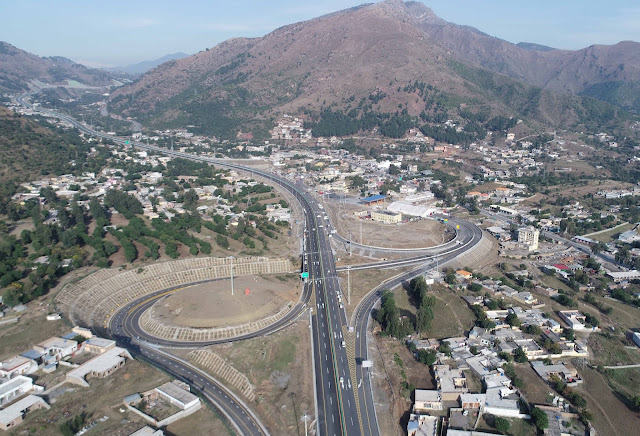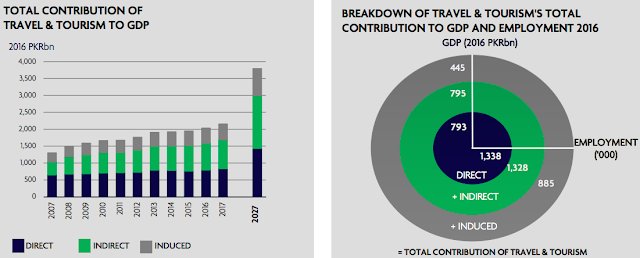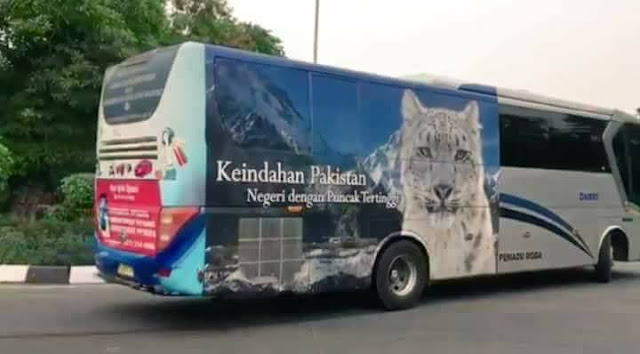PakAlumni Worldwide: The Global Social Network
The Global Social Network
Improved Security and New Infrastructure Boost Pakistan Tourism Industry
Large numbers of Pakistanis headed north for respite from summer heat during Eid ul Fitr holidays last week. Tens of thousands went to Swat using the newly built Swat Expressway while others chose even cooler temperatures in the heights of the Karakoram mountain via the improved Karakoram Highway.
 |
| Karakoram Highway |
 |
| Fairy Meadows near Nanga Parbat in Gilgit Baltistan |
Swat Expressway:
Over 60,000 vehicles used the expressway to enter Swat Valley over Eid holidays, according to local officials as reported by Pakistani media. It's a far cry from early 2009 when the Taliban appeared to be in control of Pakistan's Swat valley, and the US politicians and international media were deeply concerned about the insurgents closing in on Islamabad.
Then US Secretary of State Hillary Clinton warned in 2009 that Pakistan was “abdicating to the Taliban”. Various western commentators and pundits went further by predicting Pakistan's "imminent collapse", and the usual foreign policy rags chimed in with their shrill talk of Pakistan as a "failed state". By 2011, Pakistan Army cleared Swat of the militants, brought refugees back home and began to restore tourism.
 |
| Swat Expressway |
Built by Pakistani military's Frontier Works Organization (FWO) under contract for Khyber Pukhtunkhwa privincial government, the Swat Expressway is a state-of-the-art 81 kilometers (50 miles) long 4-lane controlled access motorway that is opening up the hidden treasures of Swat, Chitral, Dir Upper, Dir Lower, Kohistan, Shangla, Buner, Mohmand and Bajaur districts to the world. It's been funded by a $50 million grant by the Saudi government. Its southernmost point is Karnal Sher interchange in Swabi District on Peshawar-Islamabad M1 Motorway and goes north to Chakdara Dir Lower district after passing through 21 bridges and 1300 meters twin tunnels on National Highway N-45.
 |
| Karakoram Highway (KKH) |
Karakoram Highway:
Karakoram Highway (KKH), the highest paved road in the world, is a 1,300 kilometer (810 miles) Pakistani national highway that extends from Hasan Abdal in the Punjab province via Khyber Pukhtunkhwa (KP) prvince to the Khunjerab Pass in Gilgit-Baltistan, where it crosses into China. KKH upgrade is a $1.3 billion project expected to be completed as part of China-Pakistan Economic Corridor (CPEC) by 2020. After the upgrade, widths of its various sections will be in the range of 12.5 meters to 30 meters. Minimum widths of lanes will generally be between 2.5 to 3.25 meters.
 |
| Hazara Motorway in Abbottabad, Pakistan |
KKH has opened up a world of unmatched natural beauty and splendor of places like Hunza, Astore and Fairy Meadows for domestic and foreign tourists. It has connected many cities and towns including Haripur, Abbottabad, Mansehra, Battagram, Besham, Pattan, Dasu, Chilas, Gilgit, Aliabad, Gulmit, Sust, Tashkurgan, Upal And Kashgar.
 |
| Hazara Motorway M15 Connecting M1 Motorway With Abbottabad & Mansehra in KP |
Pakistan's tourism industry, currently estimated at $20 billion (6.9% of GDP in 2016), is booming, according to data available from multiple reliable sources. World Travel and Tourism Council (WTTC) forecasts it to grow to over $36 billion within a decade.
 |
| Hazara Motorway M15 Connecting M1 Motorway With Abbottabad & Mansehra in KP |
Economic Impact of Tourism:
Pakistan tourism industry generates $20 billion in revenue and supports 3.6 million jobs directly and indirectly, according to the World Travel and Tourism Council. Foreign visitors generate nearly a billion US$ in exports.
 |
| Economic Contribution of Pakistan Tourism. Source: WTTC |
Tourism Growth:
Significantly improved security situation has helped boost annual tourist arrivals in Pakistan by 300% since 2013 to 1.75 million in 2016, while domestic travelers increased 30% to 38.3 million, according to the state-owned Pakistan Tourism Development Corp. Hotel bookings increased 80 percent in 2016, according to Jovago, Pakistan’s biggest hotel booking website.
 |
| Courtesy: Nikkei Asian Review |
By contrast, foreign tourist arrivals in the country’s larger neighbor, India, jumped from 6.97 million in 2013 to 8.8 million in 2016, according to Indian government figures. 88% of India's and 92% of Pakistan's tourism revenue is domestic. India's tourism industry is worth $209 billion (9.6% of of GDP in 2016), according to WTTC.
| Malam Jabba Ski Resort in Swat Valley |
A story in the Financial Times, a British newspaper, quotes British tour operator Jonny Bealby as saying, “While I am sure this will raise some eyebrows, we are starting to see a marked increase in tourism to Pakistan". Bealby's company arranged 55% more clients to Pakistan in 2017 compared with 2016, and advance bookings are more than 100 per cent up on this point 12 months ago, according to the Financial Times.
Top Adventure Tourism Destination:
British Backpackers Society has recently ranked Pakistan as its top destination for adventure tourism. The Society describes Pakistan “one of the friendliest countries on earth, with mountain scenery that is beyond anyone’s wildest imagination”.
 |
| Pakistan Tourism Promotion in Jakarata, Indonesia |
 |
| Pakistan Brand Promotion on London Buses |
Pakistan Tourism Promotion:
Pakistan government's tourism campaign — including covering buses in several major world cities with beautiful pictures of Pakistan's tourist attraction — have helped raise the country’s profile. Increased investments in roads, airports and other infrastructure have helped ease travel.
Pakistan government has announced its decision to provide 30 day tourist visa on arrival for visitors from 24 countries on three continents.
Summary:
Improved security and new infrastructure are boosting Pakistan's domestic and international tourism. The industry in Pakistan is booming with 300% increase in foreign tourist arrivals since 2013. Tens of thousands of domestic tourists went to Swat using the newly built Swat Expressway while others chose even cooler temperatures in the heights of the Karakoram mountain via the improved Karakoram Highway. Some of the preferred tourist destinations included Hunza, Astore, Fairy Meadows, Neelum Valley, Swat and Kumrat. In addition to using tents in camping areas, many tourists found accommodations in public rest houses ordered opened by Prime Minister Imran Khan. Tourism industry contributed $20 billion (6.9% of GDP in 2016) and supported 3.6 million jobs in Pakistan in 2016. World Travel and Tourism Council (WTTC) forecasts it to grow to over $36 billion within a decade.
Related Links:
Haq's Musings
South Asia Investor Review
Pakistan Travel and Tourism Boom
Extreme Kayak Adventures in Pakistan
Helicopter Skiing in Karakorams
Climbing K2: The Ultimate Challenge
Indian Visitors Share "Eye-Opening" Stories of Pakistan
American Tourist Picks Pakistan Among Top 10 Best Countries to Visit
Pakistani American to Pakistani Diaspora: Go Back and Visit Pakistan
Riaz Haq's YouTube Channel
PakAlumni Social Network
-
Comment by Riaz Haq on December 22, 2022 at 6:55pm
-
Pakistan Preserves Its Buddhist Heritage Amidst Grave Challenges
https://www.eurasiareview.com/22122022-pakistan-preserves-its-buddh...
Gandhara was the home of a distinctive art style that was a mixture of Indian Buddhist and Greco-Roman influences. Depictions of the Buddha and Bodhisatvas (Enlightened Beings) were the mainstay of Gandhara art. Sculptures that have survived the ravages of time and the depredations of iconoclasts, show various aspects of the Buddha’s life.
However, it is the representation of the Buddha in human form that went on to influence art in China, Japan, Korea, and other parts of East Asia. It is said that the Gandhara region has the world’s only statue of a “fasting Buddha” – a Buddha in skin and bones with ribs jutting out.
The ancient Buddhist sites and the art therein, which had been neglected for centuries, were discovered by British archeologists in the colonial period. Their work was continued by Pakistani archeologists after independence in 1947. Successive Pakistani governments, except the one led by Gen.Zia-ul-Haq (1978-88), had sustained the archeological and conservation projects.
However, in 2006-2007, the Taliban banned the preservation of these objects because even the existence of idols in the midst of Muslims was “haram” or forbidden. The Taliban damaged the face of a giant Buddha statue in Swat. However, the then President, Gen.Pervez Musharraf, stood like a rock behind the conservationists and negotiated the withdrawal of the Taliban from their destructive project. Archeologists and art lovers in Pakistan and abroad breathed a sigh of relief.
Pakistan also started exhibiting Gandhara art in various places in the world, including the US. At an exhibition in New York of Gandhara art brought from the Lahore and Karachi museums, the then Pakistani Ambassador in the UN, Abdullah Hussain Haroon, waxed eloquent about the Buddha. He said that the Buddha was a human being whose “ethereal qualities and enormous wisdom showed the path to several others like Gandhi down the centuries.”
In 2016, Pakistani archeologists discovered an ancient site at Bhamala in Swat in which there was a 14 meter (48 ft) long Kanjur stone “Sleeping Buddha” statue. This 3 rd.Century AD statue is the world’s oldest Sleeping Buddha statue.
When the finding was presented to the world, the President of the Pakistan Tehreek-i-Insaaf (PTI) party, Imran Khan, said: ” It is a world heritage site and because of that, people will come for religious tourism and see these places. The majority of the Pakistani population wants such sites restored.”
Apart from the government, individual Pakistanis have also rendered yeoman service in preserving and protecting Buddhist sites against depredations by idol thieves and smugglers. Osman Ulasyar had stopped local boys from playing cricket in a field full of Ist. Centry AD Buddhist stupas. And, at this own cost, he built a 300 ft wall to protect the stupas.
Reuters quoted Dr.Abdul Samad, Director of Archeology and Museums in Khyber Pakhtunwala province as saying: ” Gandhara was the center of religious harmony. It is here that one finds Greek, Roman, Persian, Hindu and Buddhist gods in a single panel in the Peshawar museum.”
But tragically, the common Pakistani’s awareness of his non-Islamic past is either non-existent or pathetically low because school history books have blacked out the pre-Islamic past. This grievous flaw will need to be corrected at the earliest in the interest of the preservation of Gandhara art and the enormous tourist potential which is in it.
The other danger that lurks constantly, is the destruction, stealing and smuggling of ancient artifacts by treasure thieves. The government has armed itself with the Antiquities Act to protect the sites and also to prevent domestic and international sale of these antiquities. Success in this area is by no means insignificant since the Gandhara sites are still there for all to see. Many of the artefacts are kept safely in museums.
Comment
- ‹ Previous
- 1
- …
- 3
- 4
- 5
- Next ›
Twitter Feed
Live Traffic Feed
Sponsored Links
South Asia Investor Review
Investor Information Blog
Haq's Musings
Riaz Haq's Current Affairs Blog
Please Bookmark This Page!
Blog Posts
IMF Questions Modi's GDP Data: Is India's Economy Half the Size of the Official Claim?
The Indian government reported faster-than-expected GDP growth of 8.2% for the September quarter. It came as a surprise to many economists who were expecting a slowdown based on the recent high-frequency indicators such as consumer goods sales and durable goods production, as well as two-wheeler sales. At the same time, The International Monetary Fund expressed doubts about the Indian government's GDP data. …
ContinuePosted by Riaz Haq on November 30, 2025 at 11:30am — 1 Comment
Retail Investor Growth Driving Pakistan's Bull Market
Pakistan's benchmark index KSE-100 has soared nearly 40% so far in 2025, becoming Asia's best performing market, thanks largely to phenomenal growth of retail investors. About 36,000 new trading accounts in the South Asian country were opened in the September quarter, compared to 23,600 new registrations just three months ago, according to Topline Securities, a brokerage house in Pakistan. Broad and deep participation in capital markets is essential for economic growth and wealth…
ContinuePosted by Riaz Haq on November 24, 2025 at 2:05pm — 2 Comments
© 2025 Created by Riaz Haq.
Powered by
![]()

You need to be a member of PakAlumni Worldwide: The Global Social Network to add comments!
Join PakAlumni Worldwide: The Global Social Network